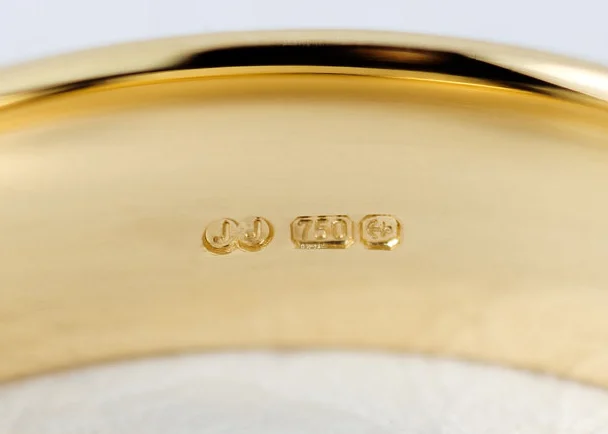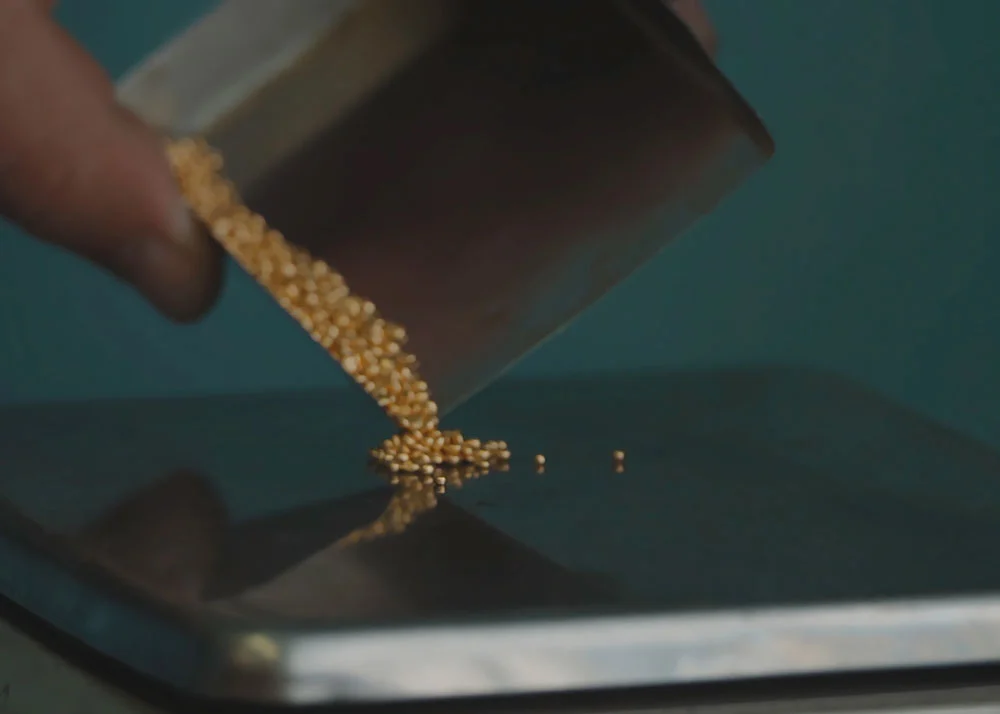Durability and Everyday Wear
When choosing a precious metal for your jewellery, it’s important to remember that no metal is indestructible. All precious metals, including 18ct gold and platinum, are susceptible to everyday wear and tear. Over time, rings and other pieces will accumulate scratches, scuffs, and signs of aging due to exposure to various elements and activities. However, different metals exhibit distinct properties that affect their durability, scratch resistance, and overall maintenance.

Which Metal is the Most Scratch Resistant?
When it comes to durability, Platinum 950 is the standout choice for wedding rings is the standout choice for wedding rings. It’s dense and highly resistant to wear, which makes it far more durable for daily wear compared to 18ct gold alloys. However, platinum sits around 4 on the Mohs scale of hardness, which measures a material’s resistance to scratching, For reference, a diamond - the hardest naturally occurring material - ranks at 10 on the Mohs scale. This means platinum is not considered a "hard" metal—it can be scratched by any material that’s harder than it, such as steel or ceramics that are higher on the scale. Platinum’s structure is exceptionally resilient, so it doesn’t lose metal when it scratches; rather metal is displaced on the surface and forms a unique patina that can be polished to restore its original shine. 18ct white gold is the next most durable option. The gold alloy itself sits around 2.75 on the Mohs scale but its rhodium plating is slightly harder than platinum and offers extra scratch resistance as well as giving it a reflective, bright white finish, but this plating wears over time and typically needs reapplication every 1-2 years to maintain its shine. 18ct rose gold follows in durability because its copper alloying makes it harder than yellow gold, giving it moderate resistance to scratches. 18ct yellow gold, is softer and more prone to scratches and dings. However, many find that its gradual wear adds to its classic, lived-in charm. Both 18ct yellow gold and 18ct rose gold rank around 2.75 on the Mohs scale. However, the difference in their durability and malleability comes from the metals they’re alloyed with. Rose gold has a higher percentage of copper, which is harder than silver, making it slightly more resistant to wear. In contrast, yellow gold has a higher silver content, giving a more malleable quality.What is a Patina?
A patina is a thin layer that develops on the surface of certain metals over time due to exposure to air, moisture, oils, and surface scratches and markings. This layer can create a soft, matte finish that adds depth, character, and an antique or vintage look to the metal. Patina can appear as a slight darkening, a subtle colouration, or simply a change in sheen.For example, while copper and bronze develop a greenish-blue patina due to oxidation, platinum often develops a soft, satiny patina that many people find appealing. In the case of gold alloys, a patina might give the metal a warmer, aged look. Though patina is typically valued for its character, it can usually be polished away if a high-shine finish is preferred.
Which Metal Tarnishes and Changes Colour the Most?
Regarding tarnish, 18ct white gold is the most prone to visible changes, as it can appear slightly yellowish when its rhodium plating wears off. Routine re-plating restores its bright white hue, but for those seeking a low-maintenance metal, this is a factor to consider. 18ct rose gold has a warmer tone that may darken slightly over time, as the copper in its alloy develops a gentle patina; many find this softening effect enhances the vintage appeal of rose gold rather than detracting from its beauty. 18ct yellow gold is highly resistant to tarnish and will retain its warm hue even as it ages. Platinum is also tarnish-resistant and will keep its silvery colour indefinitely. While it may develop a slight patina with wear, this is often cherished as part of platinum’s distinct character and can be polished away if preferred.Can 18ct Gold and Platinum Bend?
In terms of bending, Platinum 950 is by far the most resilient, thanks to its density, which makes it far less prone to warping or bending under pressure. 18ct white gold also holds its shape well, though it’s slightly more brittle than platinum. Due to its copper alloying, 18ct rose gold has moderate bending resistance, balancing some structural integrity with a little softness. 18ct yellow gold is the most malleable and therefore the most prone to bending, especially under impact or frequent wear, although it’s easily polished and repaired. It is worth considering, however, that all 18-carat gold alloys score around 2.75 on the Mohs scale, so differences in their hardness are minimal during normal everyday wear. The slight variations in alloy composition don’t significantly impact their durability under typical conditions, rather subtly change their behaviours/properties.Which Precious Metal is the Best Choice for a Wedding or Engagement Ring?
- Best for Longevity and Durability: Platinum 950 is generally the best choice if durability, resistance to tarnish, and longevity are top priorities. It’s also hypoallergenic and maintains its colour and structure exceptionally well, though it can develop a patina that can easily be polished.
- Best for Minimal Maintenance with a Classic Look: 18ct yellow gold is a strong choice if you want a timeless, warm look that’s low-maintenance and will keep its colour. Though it’s softer, it ages gracefully and can be polished to restore shine.
- Best for a Modern, Bright Look: 18ct white gold offers a brilliant, reflective finish, though it requires occasional rhodium re-plating to maintain its brightness.
- Best for a Warm, Distinctive Style: 18ct rose gold is ideal for those who prefer a slightly harder gold that develops a vintage-style patina over time, lending a romantic aesthetic.
How can I keep my ring looking like new?
If you wear your wedding ring as it's intended, then keeping it like new is impossible, but here are some effective tips for maintaining your wedding ring’s appearance:
- Clean Regularly: Use a soft cloth or gentle soap solution to clean away dirt and oils. Avoid harsh chemicals that could damage metals and gemstones.
- Store Carefully: Keep rings in a soft pouch or separate compartment to avoid scratches.
- Avoid High-Impact Activities: Remove your ring during sports, heavy lifting, or gardening to prevent damage.
- Professional Maintenance/Repair/Restoration: Seek expert care when needed to restore shine, address scratches, or handle repairs.
Regular care will help keep your ring beautiful, but each scratch or mark will add to its unique story, capturing moments and memories along the way. As your marriage grows, a natural patina will develop, creating a piece that’s deeply personal and truely unique to you both.









































